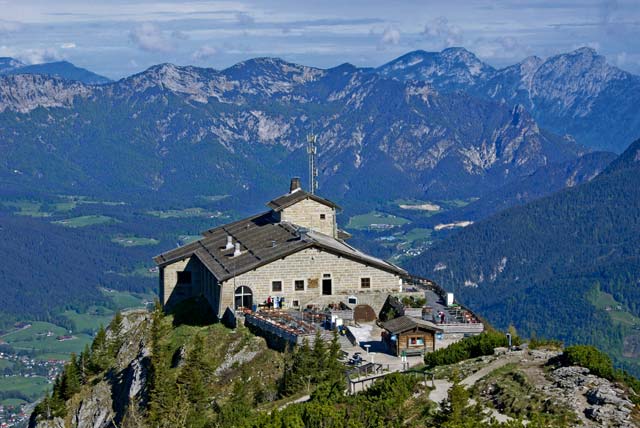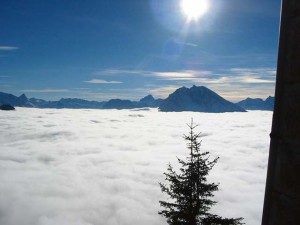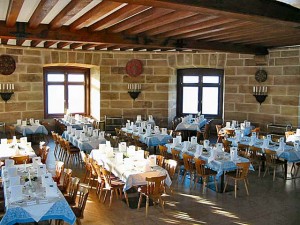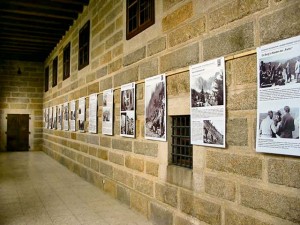
The Eagle’s Nest, also referred to as the Kehlsteinhaus, was given to Adolf Hitler as a birthday present in 1939. It is now a restaurant and tourist destination.
Located in Berchtesgaden, Germany, resting 6,017 feet high upon the Kehlstein Mountain is the “Eagles Nest,” also called the Kehlsteinhaus. Just looking at the Eagle’s Nest, one can easily think of it as “just a restaurant,” but it is more than that.

The Eagle’s Nest was once a diplomatic teahouse given to Adolf Hitler in 1939 as a gift for his 50th birthday. It was intended to be used as a quiet retreat for Hitler during World War II, but in reality, he rarely ever visited it because of his fear of heights and claustrophobia. Being at the teahouse actually made Hitler feel trapped at the top of Germany’s high road. In fact, Hitler only visited the Eagle’s Nest a total of 14 times. Its beautiful location and other historical sights surrounding it is what now makes it one of the most popular attractions in Germany.
Today, guided tours led by Eagle’s Nest Tours (the first to offer guided tours in 1990 and the only ones who do in-depth tours) help present the true meaning behind the Kehlsteinhaus by tying it in with more of the mountain’s history. The Eagle’s Nest can easily be mistaken for Hitler’s home, the “Berghof,” that used to be located in Obersalzberg where Hitler once made many of his major and devastating decisions before and during the war. Both buildings were once referred to as a teahouse, so people still get one mixed up with the other, especially since the Berghof no longer exists.

A traditional Eagle’s Nest tour takes you through Obersalzberg, up the windy Obersalzberg road (Eagle’s Nest Road) around Hitler’s last commanding headquarters, where the Berghof once was and then to the documentation center (a museum just above Berchtesgaden) and down through the underground bunker system. From here you can hop onto one of the special busses designed to climb the steep 27 percent incline up the side of Kehlstein mountain — no other vehicles can safely drive up from that point.
After departing the special bus, you will walk through a dark marble tunnel leading to an original brass elevator once used by Hitler himself. This large elevator takes you up 406 feet directly into the building in 41 seconds where you can then soak up the view of the Alps, walk around and maybe have a bite to eat at the delicious Bavarian restaurant. Just getting into the Eagle’s Nest is an adventure all in itself. If you’re feeling ambitious and the weather permits, it’s a 2 hour hike from Obersalzberg up to the Eagle’s Nest. You can even drive yourself up Eagle’s Nest Road directly to the documentation center and hop on the special busses from there.

If you skip the tour, be sure to pick a sunny day to visit the Eagle’s Nest for the best experience, since all you will have to go off of is the amazing view of the mountains and a tasty restaurant. Fifty percent of time the fog takes away the scenery, so if you pick the wrong day to go independently, especially if it’s your first visit, it could feel like a waste of time.
Other attractions around Obersalzberg include Germany’s cleanest and deepest lake, Lake Königsee (650 feet deep) and the salt mines.
At the salt mines, take a train through the mines, zip down a 120 to 130 foot slide, and then visit the salt museum to learn more about mining history.
Since Germany had such a calm winter this year, the Eagle’s Nest is expected to open May 8 and close again at the end of October. Being so high up, the Eagle’s Nest gets an average of 10 feet of snow at a time, so that can determine whether or not it’s time to open or close to the public.
For more information about the Eagle’s Nest, guided tours and how to get there, visit eagles-nest-tours.com/EN.


